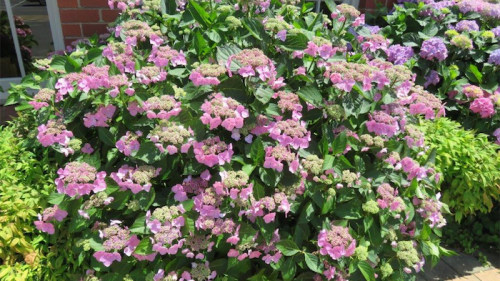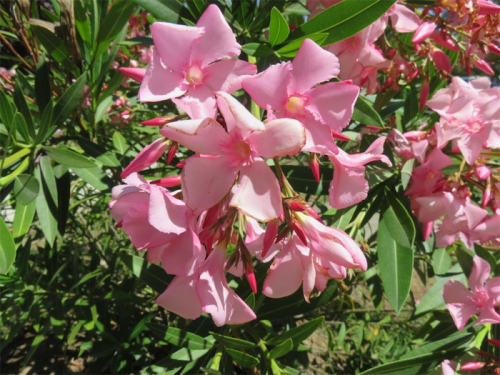
SHRUBS that flower for an extended period is the wish of all gardeners, despite the fact most shrubs flower for only a relatively short time.

While nature wonderfully provides us with a continuity of flowers for all seasons, some shrubs surprise us with their long flowering period.
There are two fine examples in hydrangeas and oleanders, which offer flowering from late spring to late autumn.
Hydrangeas, beloved of gardeners of earlier times, are coming back into fashion despite being often considered difficult to grow, requiring shade and applying chemicals to achieve the preferred flower colour. And yet hydrangeas grow very well in this district with an extremely long flowering period. Today’s hydrangeas don’t need the application of chemicals to change colour; modern varieties if blue, stay blue or pink, stay pink irrespective of soil type.
Hydrangeas are native to North and South America and some are from Asia. Ranging from small shrubs to climbers, an example of the latter is Hydrangea petiolaris from Korea, Japan and Himalaya. With pure white flowers that are good dried for floral arrangements or as a cut flower. This is a vigorous climber that needs a strong trellis or can be trained on horizontal wires.
Then there’s Hydrangea quercifolia or oak leaf hydrangea, with huge leaves and equally large, impressive white flowers. One recent white-flowered, smaller introduction from Plant Growers Victoria is “Candlelight” growing to 1.5 metres x 1.5 metres.
There are mainly two types grown, hortensia and lacecaps. The hortensia are mop headed of mainly sterile ray florets. The lacecap is flat-topped, consisting of small, fertile flowers in the centre and large ray florets in an outer ring, plus within these groups there are singles, doubles and frilled petals, a wonderful variety from which to choose. Hydrangeas can be grown in the ground or in containers, preferring early morning sun with the extremes of heat off them by mid-morning. However, having said this I know of huge hydrangeas growing in full sun. They are not fussy about soils providing they drain well. Obviously, they must not be allowed to dry out in summer with a good application of mulch in spring.

AT the mention of oleanders many people throw their hands up in horror, fearful that all parts of the plant are poisonous – as are many other commonly grown plants.
“Canberra Gardener” once listed more than 120 plants that, if chewed or eaten, could be harmful to humans and animals: or could cause severe skin irritations when touched.
Commonly grown plants such as daphne, delphiniums, euphorbia are examples.
Oleander (Nerium) is from south-east Asia and now widely grown throughout the world for its hardiness and long flowering period.
A large stand of oleander is growing behind the Canberra Theatre. Just look at the delightful flowers in the photo. Tall and dwarf varieties are available to suit all gardens.
Jottings…
- I noticed, in magazine format, “Your Essential Guide to Pruning” from the BBC Gardeners’ World. It’s an excellent publication, available from newsagents, with the information applicable here.
- Think about establishing a compost heap before autumn.
- Don’t worry if the leaves are shrivelling on the Clematis napaulensis or “Wisley Cream”. They are winter-flowering clematis and lose their leaves at this time, not through lack of water.
- Plant now Amaryllis belladonna, Nerine bowdenii, Schizostylis coccinea and Colchicum or autumn crocus for an autumn display.
Who can be trusted?
In a world of spin and confusion, there’s never been a more important time to support independent journalism in Canberra.
If you trust our work online and want to enforce the power of independent voices, I invite you to make a small contribution.
Every dollar of support is invested back into our journalism to help keep citynews.com.au strong and free.
Thank you,
Ian Meikle, editor




Leave a Reply